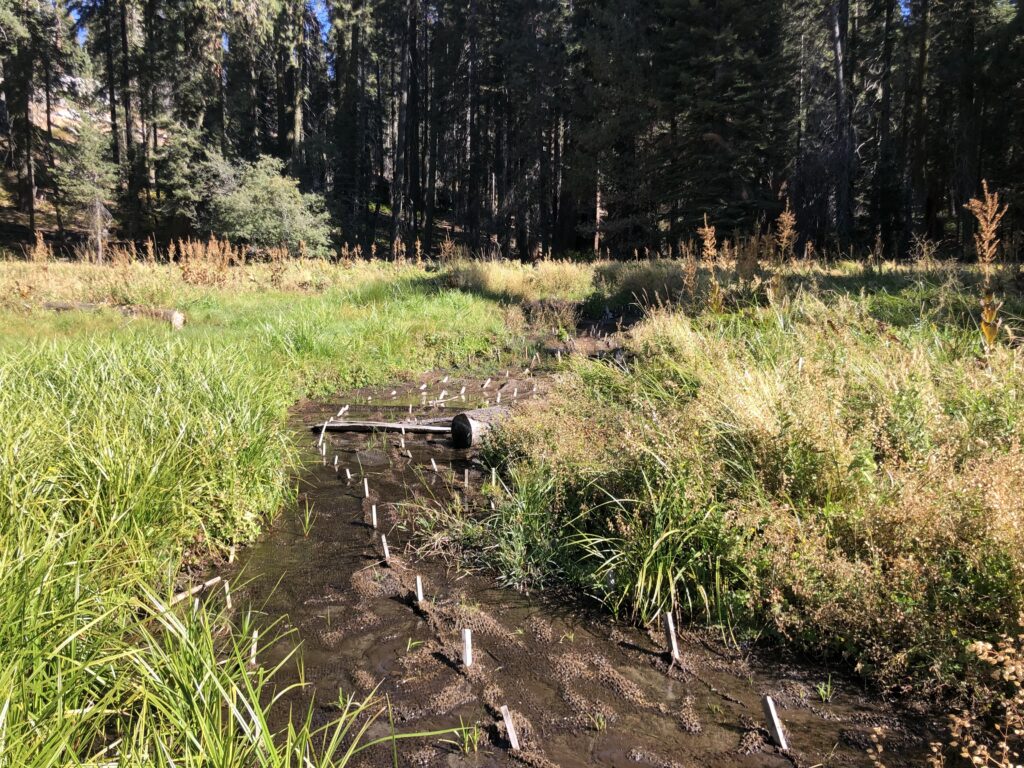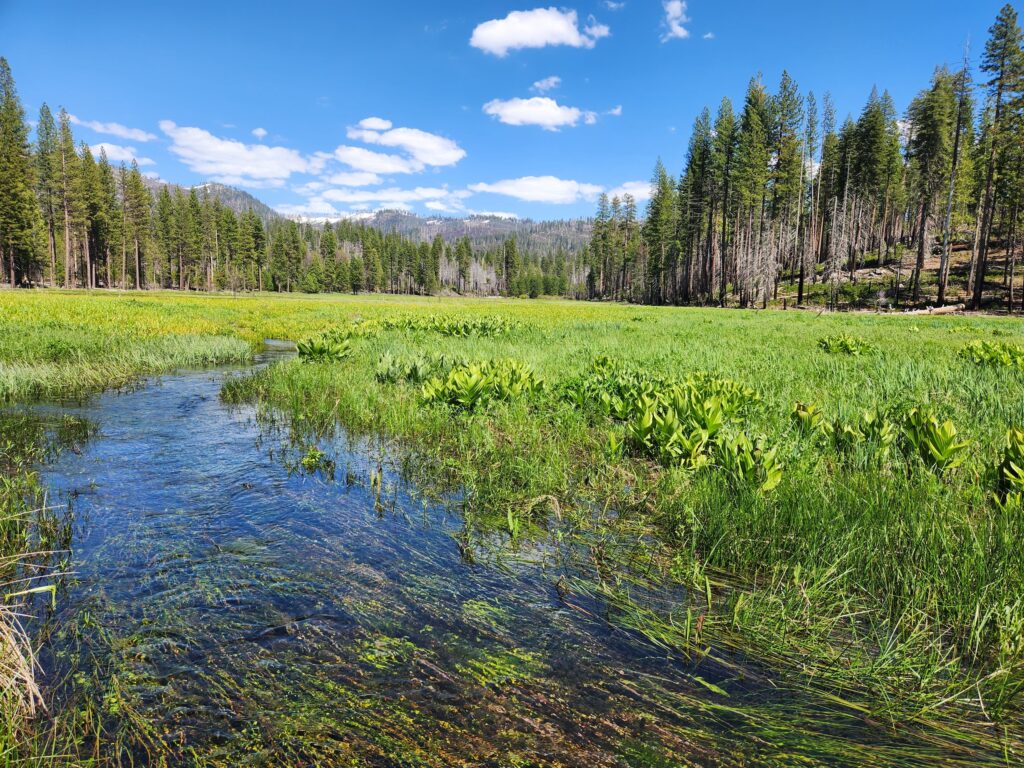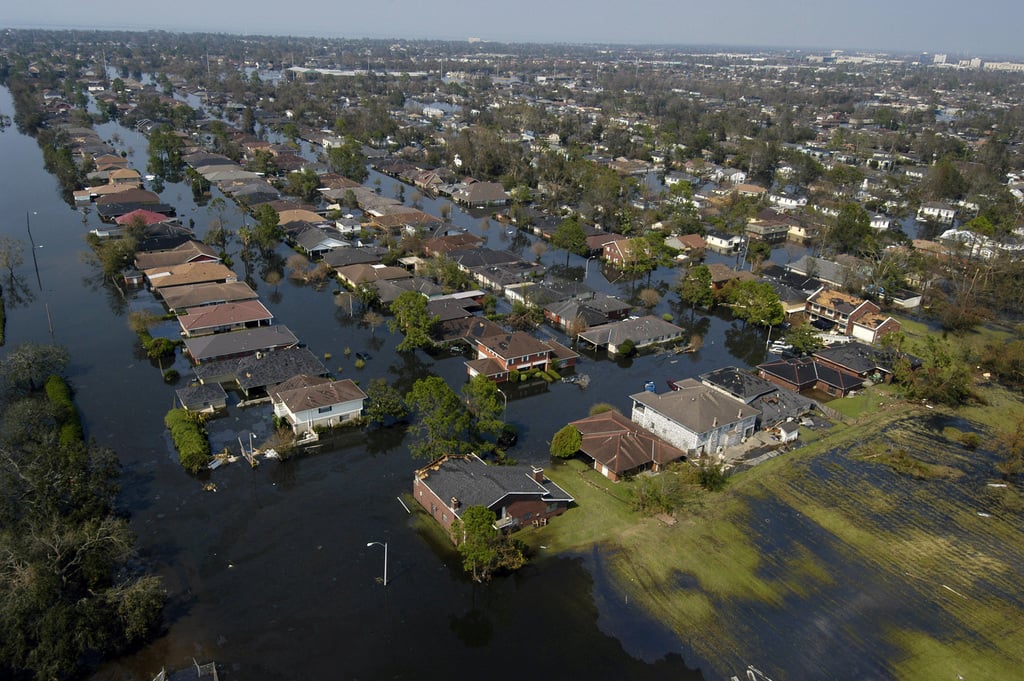
Healthy mountain meadows in a river’s headwaters have a cascading effect on the watershed that supports wildlife, clean water, and wildfire resilience. Wilson Ranch Meadow, a 90-acre meadow in Eldorado National Forest in California, was identified as a site that, if restored, would have watershed-wide impact and surrounding landscape, from improved groundwater storage, water quality, and enhanced wildfire resilience, to the species that depend on its health.
But how did American Rivers identify Wilson Ranch as the next meadow restoration project? Our meadow restoration work follows a life cycle that starts with watershed-scale assessment and prioritization to identify impactful restoration opportunities, followed by planning, restoration, and adaptive management of the highest priority meadows. We started this process in the American River watershed in 2016 using the meadow condition scorecard, a rapid assessment tool. This tool was developed by American Rivers, University of California, Davis, and the U.S. Forest Service, to quickly gauge the health of a meadow. Using the scorecard data, a group led by American Rivers identified Wilson Ranch Meadow as a high priority for restoration which then kick-started design and permitting work in 2019, later culminating in a road crossing replacement and full-fill channel restoration in 2023 and 2024, with adaptive management slated for fall 2025.
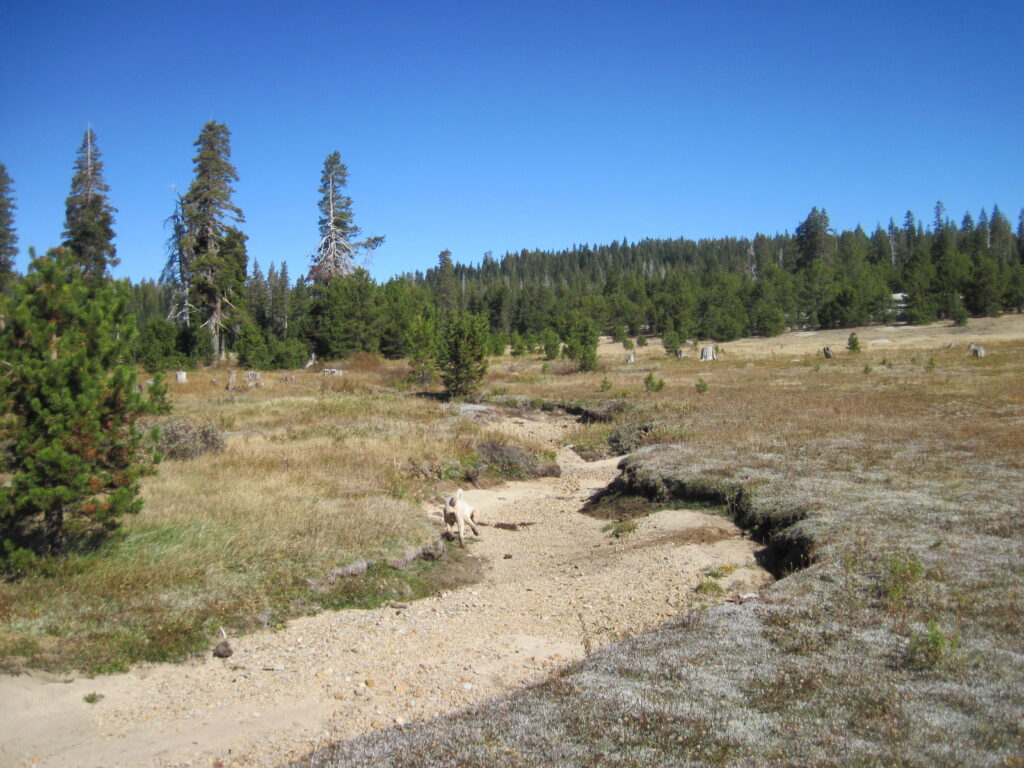
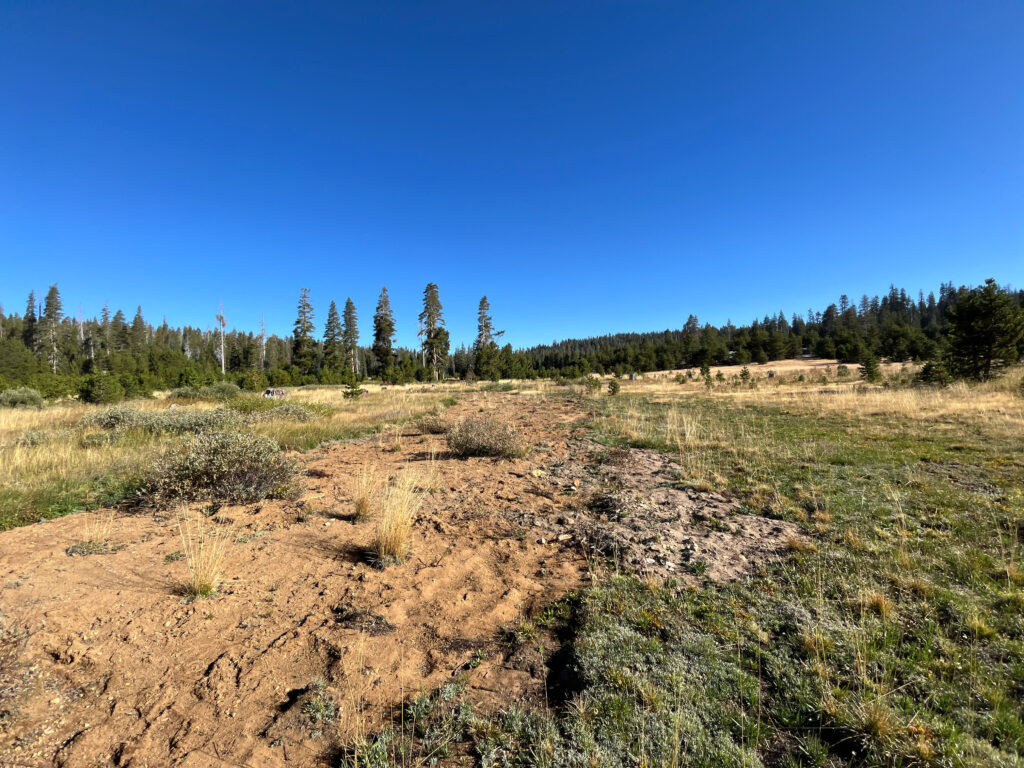
This meadow in particular serves as a stopover for migratory bird species such as willow flycatcher and provides important habitat for species like the southern long-toed salamander. The restoration phase of the project was completed last September, making this spring and summer the first time we were able to see the impacts on the hydrology of the meadow. The photo below shows flows spreading across the meadow, whereas before they funneled into an incised channel and drained away from the meadow before it could provide support for native plant and animal species. The Wilson Ranch project is now in the adaptive management and post-restoration monitoring phase, where we will continue to measure the effects of restoration and ensure our impact on the ‘fireshed’ moving forward. In September of this year, we will complete adaptive management to prevent erosion and the incision the channel, and will also continue to monitor groundwater levels, vegetation, and soil carbon in the meadow.
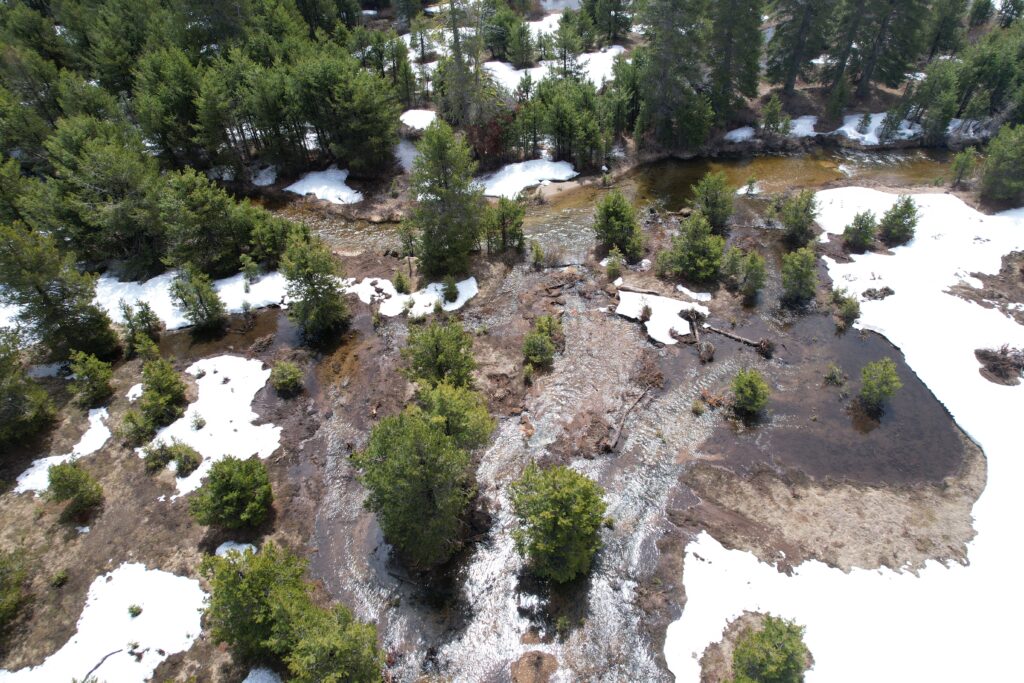
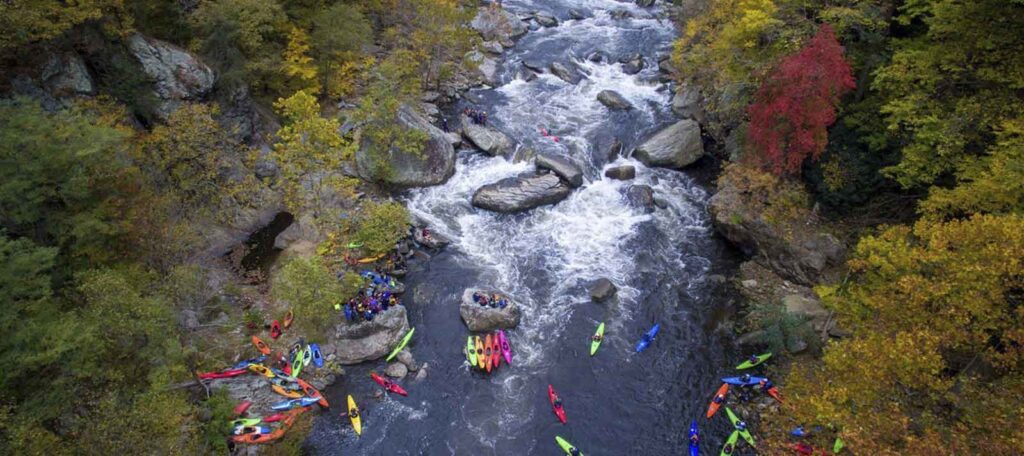
Let's Stay In Touch!
We’re hard at work for rivers and clean water. Sign up to get the most important news affecting your water and rivers delivered right to your inbox.
Throughout the restoration life cycle of Wilson, California experienced some of its largest and most destructive wildfires in recorded history. It became apparent that the qualities that sustain a healthy meadow for clean water and wildlife, also make them excellent at mitigating the negative impacts of wildfire by capturing sediment and runoff and providing high quality habitat for all life that depends it. Healthy meadows can also serve as natural breaks in fuel that can help prevent the spread of wildfire. With this in mind, American Rivers pivoted from a watershed-scale approach to a ‘fireshed’ based approach for the first time. In coordination with our partners at the Eldorado National Forest at Wilson, we updated our prioritization process to incorporate factors such as burn severity and sediment capture potential and shifted our focus to the Caldor Fire footprint, which burned approximately 167,000 acres of Eldorado National Forest in 2021.
The Wilson Ranch project and our prioritization work in the Caldor Fire footprint speak to the collaborative approach we bring to restoration work, working alongside partners such as Eldorado National Forest and in coalitions such as the Sierra Meadows Partnership and the Healthy Eldorado Landscape Partnership that are larger than the sum of their parts. This is the driving philosophy behind the landscape-scale healing of California’s watersheds, and post-fire recovery and wildfire resilience in an era of a changing climate. And as we wrap up this prioritization process, we are looking forward to tackling new restoration projects that support wildfire recovery and resilience in the Caldor region.
The restoration at Wilson Ranch Meadow was funded by the California Department of Fish and Wildlife, the California Wildlife Conservation Board, and the National Fish and Wildlife Foundation, all of whom have been ardent supporters of meadows and the wildlife that depend on them for many years.
